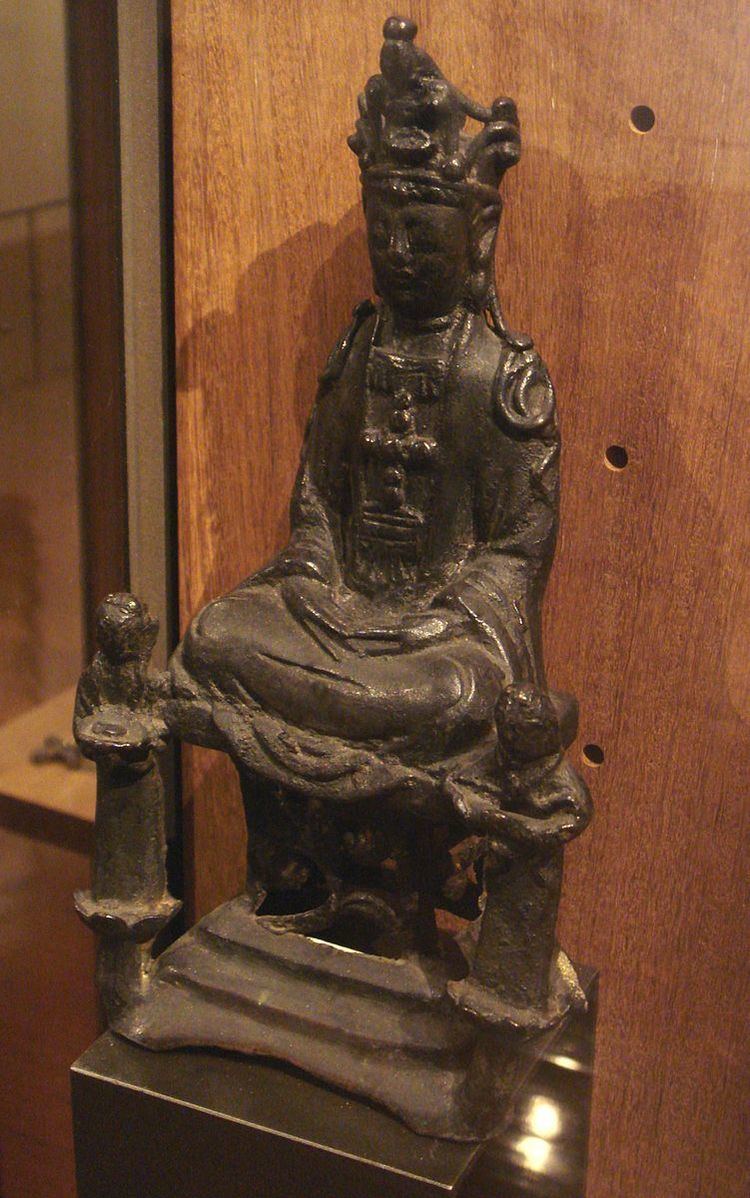 | ||
Kakure Kirishitan (Japanese: 隠れキリシタン, '"hidden Christian"') is a modern term for a member of the Japanese Catholic Church during the Edo period that went underground after the Shimabara Rebellion in the 1630s.
Contents
History
Kakure Kirishitans are called the "hidden" Christians because they continued to practice Christianity in secret. They worshipped in secret rooms in private homes. As time went on, the figures of the saints and the Virgin Mary were transformed into figurines that looked like the traditional statues of the Buddha and bodhisattvas; depictions of Mary modeled on the Buddhist deity Kannon, goddess of mercy, became common, and were known as "Maria Kannon". The prayers were adapted to sound like Buddhist chant, yet retained many untranslated words from Latin, Portuguese, and Spanish. The Bible and other parts of the liturgy were passed down orally, because printed works could be confiscated by authorities. Because of the official expulsion of the Catholic clergy in the 17th century, the Kakure Christian community relied on lay leaders to lead the services.
In some cases, the communities drifted away from Christian teachings. They lost the meaning of the prayers and their religion became a version of the cult of ancestors, in which the ancestors happened to be their Christian martyrs.
Kakure Kirishitan was recognized by Bernard Petitjean, a Catholic priest, when Ōura Church was built in Nagasaki in 1865. Approximately 30,000 secret Christians, some of whom had adopted these new ways of practicing Christianity, came out of hiding when religious freedom was re-established in 1873 after the Meiji Restoration. The Kakure Kirishitan became known as Mukashi Kirishitan (昔キリシタン), or "ancient" Christians, and emerged not only from traditional Christian areas in Kyushu, but also from other rural areas of Japan.
The majority of Kakure Kirishitan rejoined the Catholic Church after renouncing unorthodox, syncretic practices. Some Kakure Kirishitan did not rejoin the Catholic Church, and became known as the Hanare Kirishitan (離れキリシタン, separated Christians). Hanare Kirishitan are now primarily found in Urakami and on the Gotō Islands.
Modern extinction of Hanare Kirishitan
Following the legalization of Christianity and secularization of Japan, many Hanare Kirishitan lineages ended abruptly. Traditionally, boys learned the rituals and prayers from their fathers; when boys were uninterested or moved away from the homes, there would be no one left to continue the lineage.
For a while, Hanare Kirishitans were thought to have died out entirely, due to their secretive nature. A group on Ikitsuki Island in Nagasaki Prefecture, which had been overlooked by the Japanese government during all of these times, made their practices public in the 1980s and now perform them for audiences; however, these practices have acquired some attributes of theatre, such as the telling of folktales and the use of statues and other images which most underground Christians had never created.
The anthropologist Christal Whelan uncovered some Hanare Kirishitans on the Gotō Islands where Kakure Kirishitans had once fled. There were only two surviving priests on the islands, both of whom were over 90, and they would not talk to each other. The few surviving laity had also all reached old age, and some of them no longer had any priests from their lineage and prayed alone. Although these Hanare Kirishitans had a strong tradition of secrecy, they agreed to be filmed for her documentary Otaiya.
